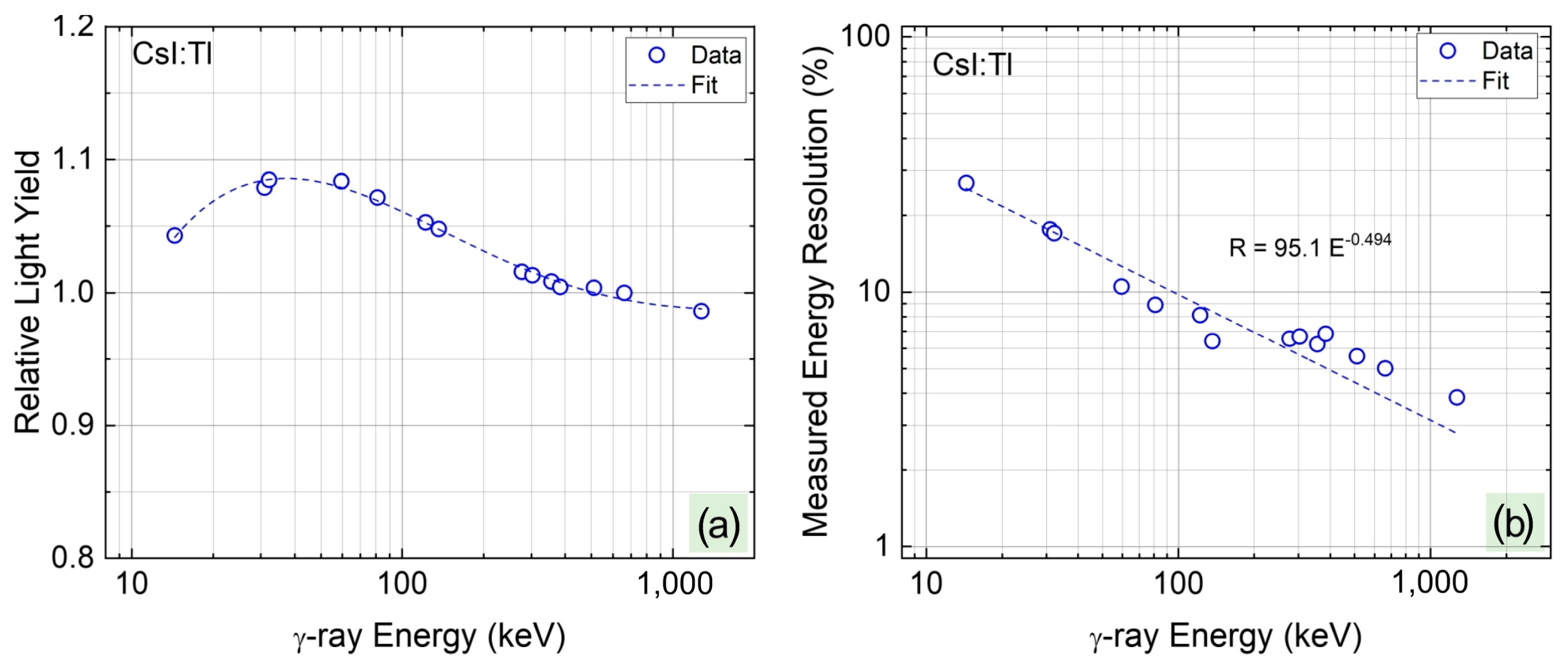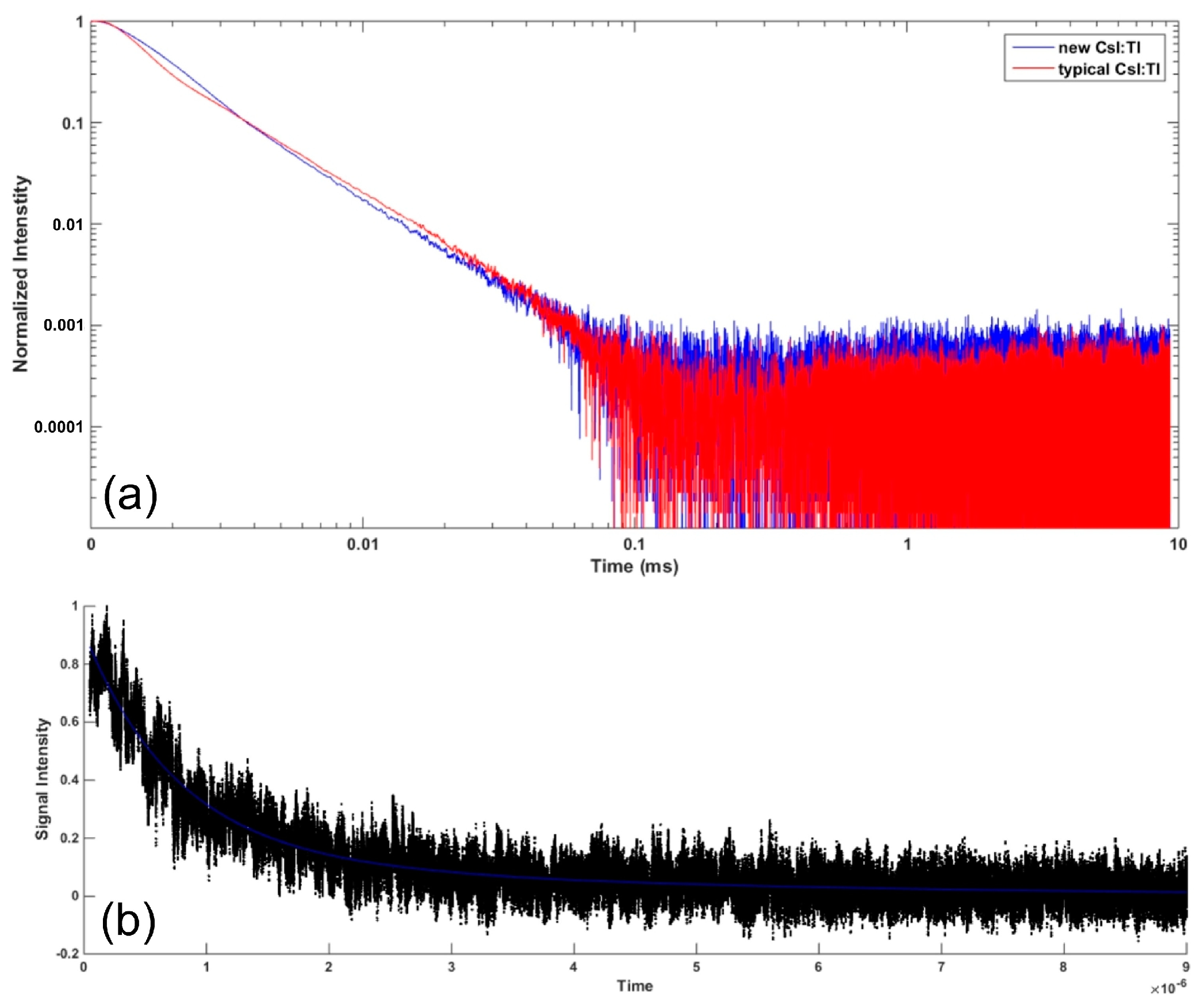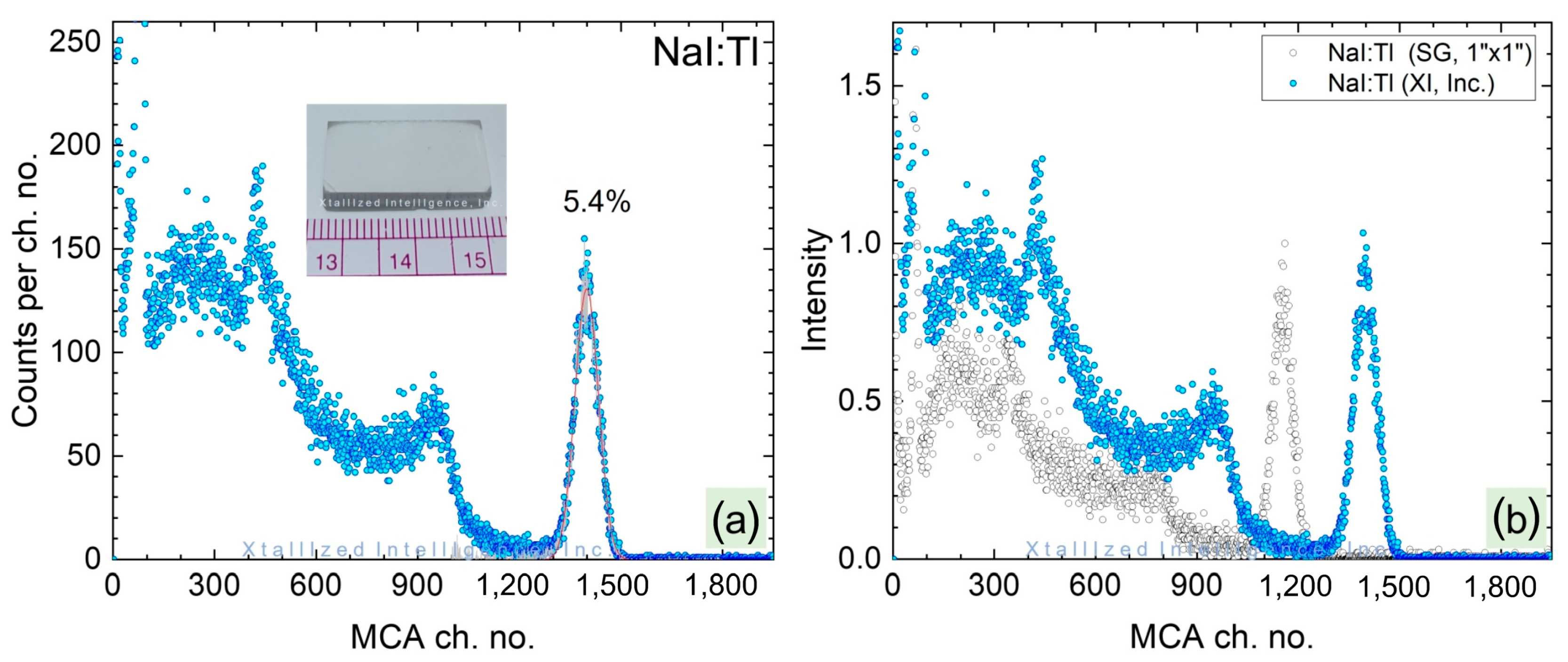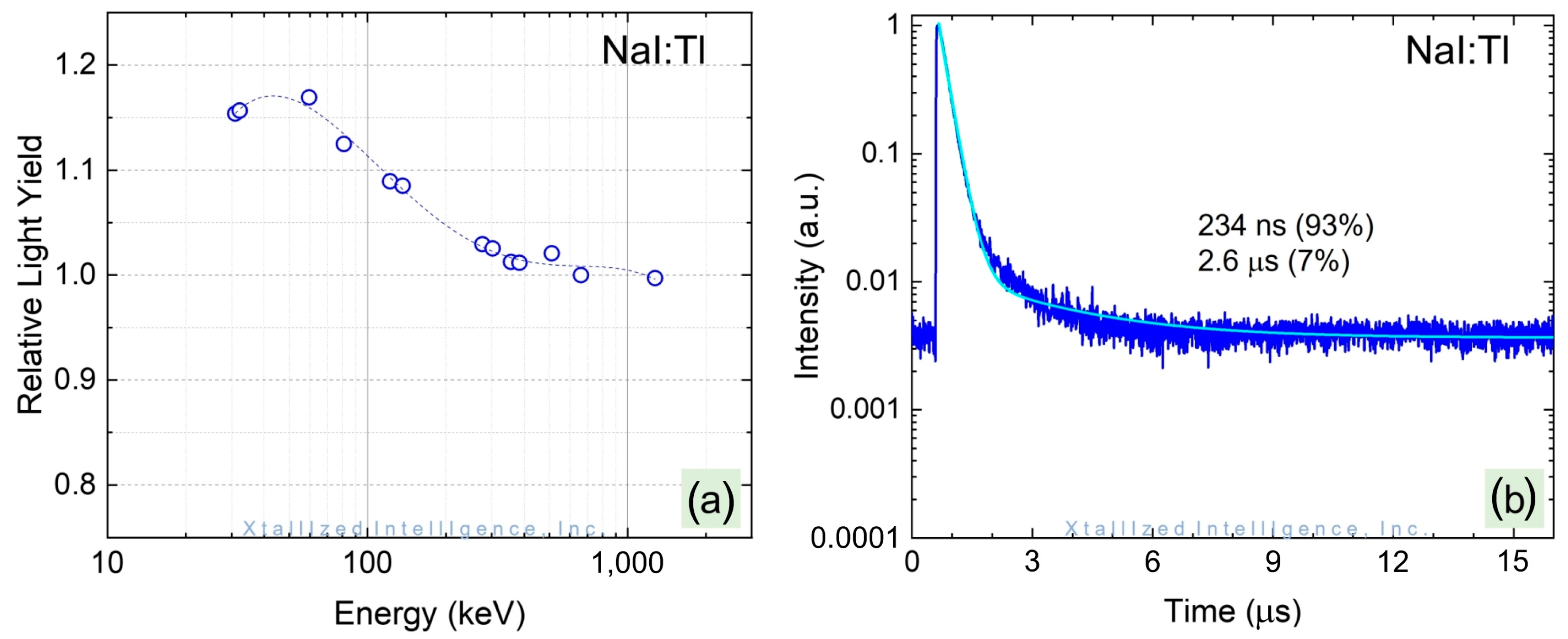Growth and Evaluation of Improved CsI:Tl and NaI:Tl Scintillators
Abstract
:1. Introduction
2. Experimental Methods
3. Results and Analysis
3.1. CsI:Tl
3.2. NaI:Tl
4. Conclusions
Author Contributions
Funding
Data Availability Statement
Acknowledgments
Conflicts of Interest
References
- Hofstadter, R. Alkali Halide Scintillation Counters. Phys. Rev. 1948, 74, 100–101. [Google Scholar] [CrossRef]
- Hofstadter, R. Properties of Scintillation Materials. Nucleonics 1950, 6, 70–73. [Google Scholar]
- Boatner, L.A.; Neal, J.S.; Kolopus, J.A.; Ramey, J.O.; Akkurt, H. The characterization of scintillator performance at temperatures up to 400 degrees centigrade. Nucl. Instrum. Methods Phys. Res. A 2013, 709, 95–107. [Google Scholar] [CrossRef]
- Hoover, A.S.; Sullivan, J.P.; Baird, B.; Brumby, S.P.; Kippen, R.M.; McCluskey, C.W.; Rawool-Sullivan, M.W.; Sorensen, E.B. Gamma-ray imaging with a Si/CsI(Tl) Compton detector. Appl. Radiat. Isot. 2006, 64, 1648–1654. [Google Scholar] [CrossRef] [PubMed]
- Rozler, M.; Liang, H.; Sabet, H.; Chang, W. Development of a Cost-Effective Modular Pixelated NaI(Tl) Detector for Clinical SPECT Applications. IEEE Trans. Nucl. Sci. 2012, 59, 1831–1840. [Google Scholar] [CrossRef] [PubMed] [Green Version]
- Sabet, H.; Bläckberg, L.; Uzun-Ozsahin, D.; El-Fakhri, G. Novel laser-processed CsI: Tl detector for SPECT. Med. Phys. 2016, 43, 2630–2638. [Google Scholar] [CrossRef] [PubMed] [Green Version]
- Shields, E.; Xu, J.; Calaprice, F. SABRE: A New NaI(T1) Dark Matter Direct Detection Experiment. Phys. Procedia 2015, 61, 169–178. [Google Scholar] [CrossRef] [Green Version]
- Lewandowski, B. The BaBar electromagnetic calorimeter. Nucl. Instrum. Methods Phys. Res. A 2002, 494, 303–307. [Google Scholar] [CrossRef]
- Ely, J.H.; Siciliano, E.R.; Kouzes, R.T. Comparison of NaI(Tl) scintillators and high purity germanium for vehicle portal monitor applications. In Proceedings of the IEEE Symposium Conference Record Nuclear Science 2004, Rome, Italy, 16–22 October 2004; Volume 3, pp. 1584–1587. [Google Scholar] [CrossRef]
- Vavrik, D.; Dammer, J.; Jakubek, J.; Jeon, I.; Jirousek, O.; Kroupa, M.; Zlamal, P. Advanced X-ray radiography and tomography in several engineering applications. Nucl. Instrum. Methods. Phys. Res. A. 2011, 633 (Suppl. 1), S152–S155. [Google Scholar] [CrossRef]
- Sakai, E. Recent Measurements on Scintillator-Photodetector Systems. IEEE Trans. Nucl. Sci. 1987, 34, 418–422. [Google Scholar] [CrossRef]
- Gascon, M.; Alvarez-Pol, H.; Benlliure, J.; Casarejos, E.; Cortina-Gil, D.; Duran, I. Optimization of Energy Resolution Obtained With CsI(Tl) Crystals for the R3B Calorimeter. IEEE Trans. Nucl. Sci. 2008, 55, 1259–1262. [Google Scholar] [CrossRef]
- Becker, E.M.; Farsoni, A.T. Wireless, low-cost, FPGA-based miniature gamma ray spectrometer. Nucl. Instrum. Methods Phys. Res. A 2014, 761, 99–104. [Google Scholar] [CrossRef]








Publisher’s Note: MDPI stays neutral with regard to jurisdictional claims in published maps and institutional affiliations. |
© 2022 by the authors. Licensee MDPI, Basel, Switzerland. This article is an open access article distributed under the terms and conditions of the Creative Commons Attribution (CC BY) license (https://creativecommons.org/licenses/by/4.0/).
Share and Cite
Hawrami, R.; Ariesanti, E.; Farsoni, A.; Szydel, D.; Sabet, H. Growth and Evaluation of Improved CsI:Tl and NaI:Tl Scintillators. Crystals 2022, 12, 1517. https://doi.org/10.3390/cryst12111517
Hawrami R, Ariesanti E, Farsoni A, Szydel D, Sabet H. Growth and Evaluation of Improved CsI:Tl and NaI:Tl Scintillators. Crystals. 2022; 12(11):1517. https://doi.org/10.3390/cryst12111517
Chicago/Turabian StyleHawrami, Rastgo, Elsa Ariesanti, Abi Farsoni, Diane Szydel, and Hamid Sabet. 2022. "Growth and Evaluation of Improved CsI:Tl and NaI:Tl Scintillators" Crystals 12, no. 11: 1517. https://doi.org/10.3390/cryst12111517




